
Being an expat Indian, my husband and I are on the one hand, thankful for the experiences and adventures our son gets to have at such a young age. On the other hand, we sometimes rue that he doesn’t fully appreciate his roots, as he is a bit alienated from the riot of colors, sounds, smells and flavors that make up everyday life in India.
So, we take him to visit his grandparents regularly. How fun are those trips for him and for us. It is so endearing to see him run around at my parents’ huge house. The little one who spent his toddler years in a sterile apartment is suddenly handed the freedom to do pretty much what he wants.
“He may fall, he will scratch his knee,” I bemoan.
“Let him be, he’ll be fine,” quips grandma.
“Do you want to select fish for lunch?” she asks.
We live in a small city down south, cradled by the Arabian Sea on one side. We still have those old-school fish mongers who bring the day’s catch straight to our doorsteps. I remember when I was little; these men came walking with fish-laden baskets on their heads. Now they come on 150cc motorbikes and I can see how the pace of modern life is definitely catching up. Nevertheless, this is a huge treat for the little one. The fish monger throws in a couple extra for the little guest; he lets him touch a few fish. My son giggles when he feels their slimy skin.
Indian culture is all about the sensory experiences.
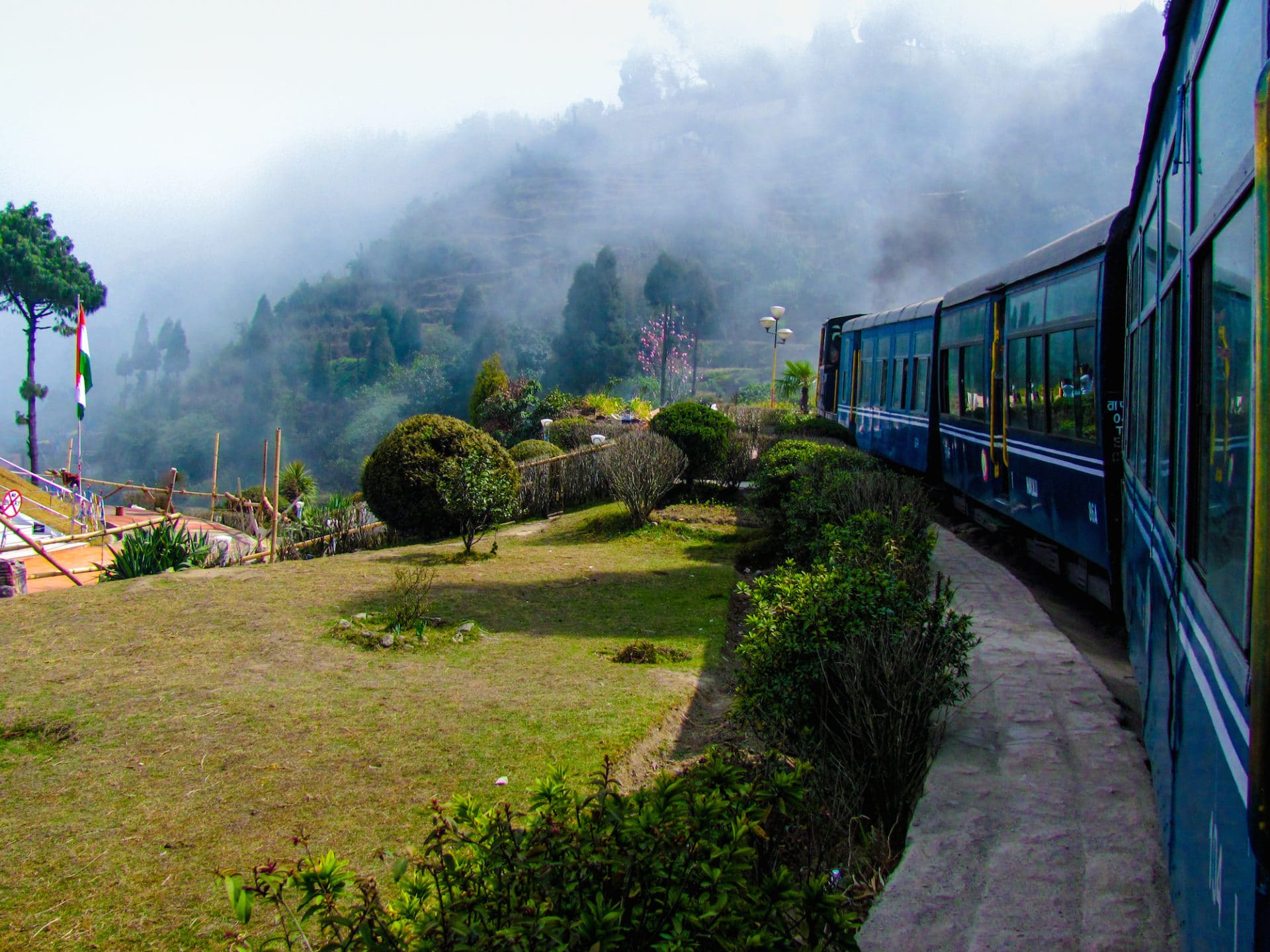
Exploring India By Train
For me, a big part of life in India was the numerous train journeys I went on. Growing up, we lived far away from our grandparents and extended family. I went to college in a faraway city. Later on, I got a job in another city. All this time, I heavily depended on this lifeblood of India.
The great Indian Railways is like a large coiled beast, crisscrossing the length and breadth of this vast country, making travel accessible and easy for the common folk. Trains are a true testament to Indian culture and local life. There are the unreserved compartments for the poor who cannot afford any form of travel at all or for the unfortunate last-minute travelers who didn’t book tickets in advance. The more fortunate and well-prepared folk get to spend their journey in air-conditioned cars with wide berths and private compartments.
Much like domestic air travel in the US, the Indian railways are a well-coordinated, albeit slightly more dusty machinery. For an enterprise this huge, the safety rate is exceptionally high. But I digress.
The real charm in these journeys lies in sights you see, the places you whiz past, the numerous nondescript and important places you encounter on the way to your destination. Train travel is very common, yet very romantic for Indians. And like any other event, we look forward to the food. Mothers and grandmothers pack delicious food for the journey in dabbas or tiffin-boxes. But the best food comes right from the railway platforms.
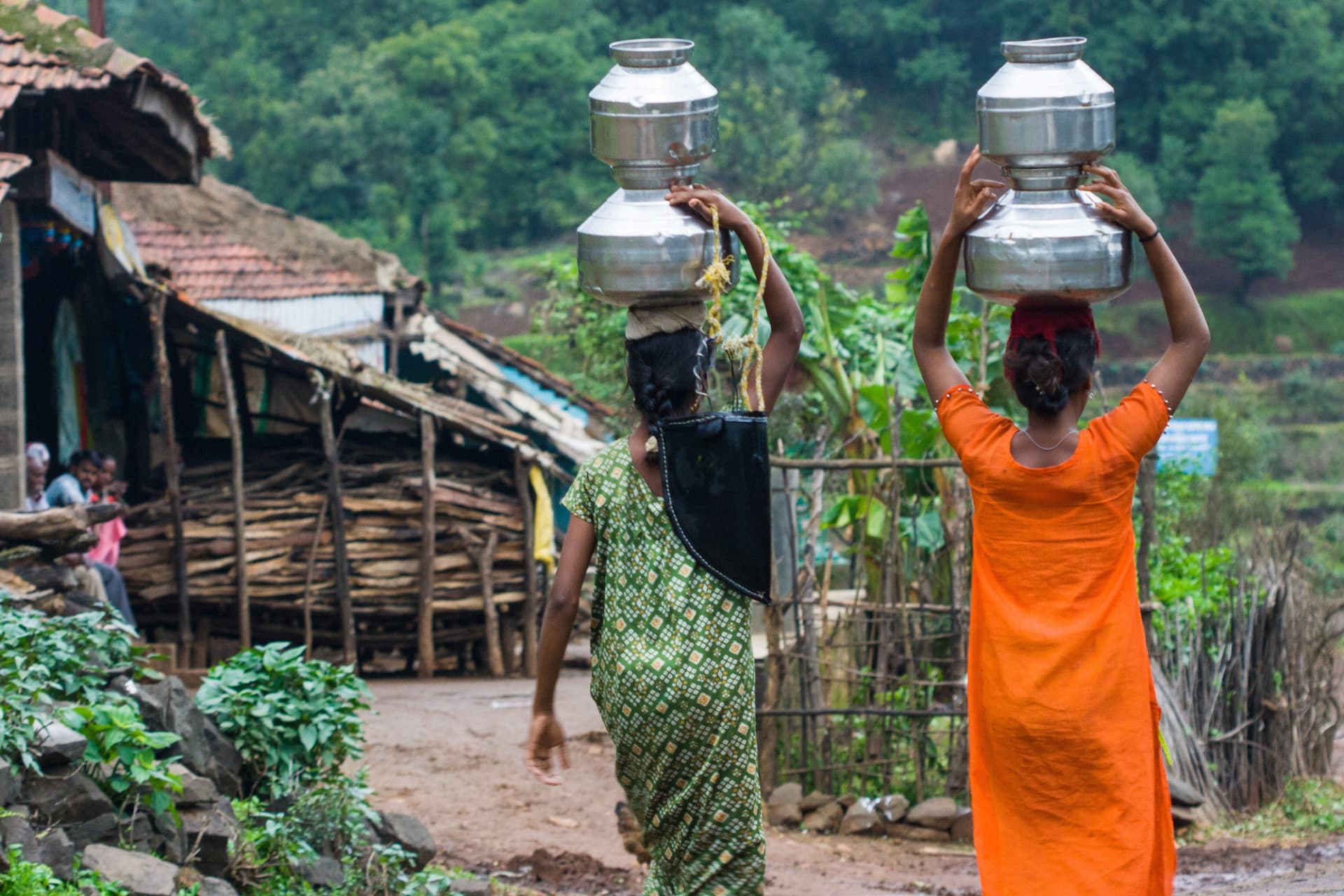
Railway Travel With An Authentic Dining Twist
Any time a train pulls into the station, you will be bombarded by the sight and sound of vendors shouting chai-chai, kapi-kapi, vade-vade, samose, idli-vade, even the ubiquitous Indian biryani makes an appearance. Don’t be fooled by the double names, the vendors simply seem to repeat them in a sort of chant-like tune, luring you with their exuberance and urgency of tone.
The train may have stopped at a small station in some village that doesn’t even exist on the map or at a large metropolis. But one thing remains the same: The food is almost always fresh, piping hot and delicious.
The coffee and tea are dispensed from samovars these vendors carry with them. There is no nonsense of fat-free, skinny, sugar-free or anything of the sort here. You drink what they brew. We South Indians are especially fond of both these dark concoctions, so don’t you dare question us how we make it.

Next up are the snacks. In South India, the most common snack of choice is vadai or vada. They come in a couple of different varieties. Some are crunchy on the outside and soft inside, with a hole in the middle, almost like a savory donut, called methu vada. Some others are crunchy throughout and a bit spicy, called masala vada.
Transactions are conducted through the window bars, the vendor handing you piping hot vade on a paper plate. Talk about biodegradable packaging. The tea or coffee too comes in small, thick paper cups. Indians brew a strong cup of coffee or tea, with full-fat milk and sweetened with lots of sugar. So a small cup goes a long way. It energizes you and wakes you up like no fancy latte could ever do.
I remember a journey with our little one. He couldn’t believe he was allowed to swing his legs about and even run around inside the large train compartment. He watched in amazement while the train whizzed past varying landscapes. We left the large city, passed through fields and went over bridges. He seemed to doze off a little. Then we pulled into a station. Mom said this place was famous for their vada and tea. I remember my son picking one vada up and pretending to steer an imaginary car.
“Vroom vroom,” he said in his baby voice.
“Take a bite,” prodded his grandma.
“Spicy?” he asked concerned.
“No, it’s delicious,” she said.
He took one bite and was hooked. I saw my mom pouring a bit of tea into his cup and cooling it. “He’s never had tea, ma,” I said. “Nonsense, it doesn’t hurt,” she replied. No, of course it doesn’t. I grew up on all these and isn’t that what I wanted for my son too?
If you ever plan to explore India, you can be rest assured you will have to rely on the great Indian Railways at some point or the other. It will take you where you need to be, when you need to be, rather efficiently. The north, south, east and west of India may be quite different in landscape and attractions. But they are truly unified by this great system. As a train thunders past, you will pause and wonder whither it came from and where it may be off to; what new smells, sights and tastes it will lead you to.
A Taste Of India At Home
Find the recipes for those delightful masala vada and traditional Indian cardamom tea below. Tea brewing in India is an art form, though a very simple one. We use black tea dust for a strong flavor, kadak or cutting chai as it is known in the sub-continent. My personal favorite blends are Darjeeling black tea and Nilgiri black tea dust. You can also use tea leaves, though they are less potent than tea dust. Try to get your hands on either of these authentic blends. But please do not ever use flavored “tea” blends. It’s just not right.
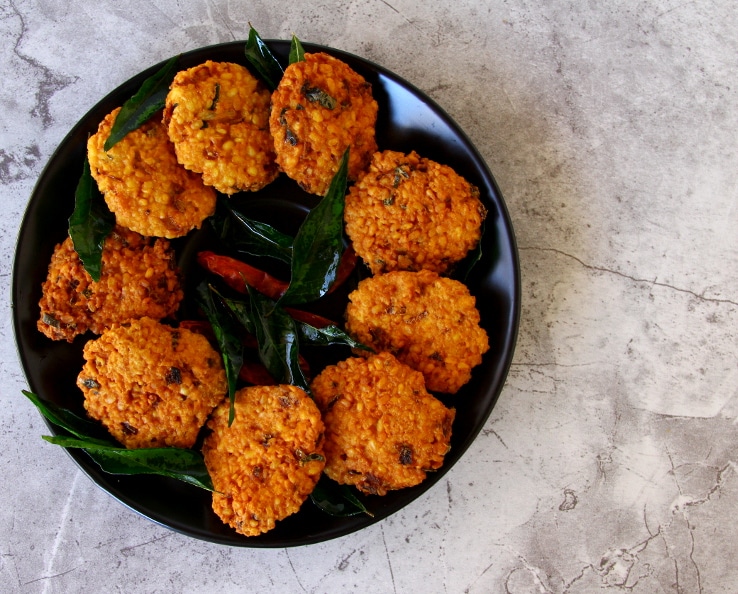
Masala Vada (Spicy Lentil Fritters)
You Will Need: (Makes 12 vada or fritters)
• Mung dal (dehusked green gram) – 1 cup
• Whole dried red chilies – 3, de-seeded (use just 1 for a less spicy version)
• Onion – 1/4 cup, finely chopped
• Ginger – 1 tbsp, grated or finely chopped
• Curry leaves – 6 large leaves, chopped
• Salt – 1 tsp
• Rice flour or chickpea flour – a few tablespoons (to be used if the dough is watery)
• Oil – for deep-frying
How To:
• Wash mung dal in cold water a couple of times, just like how you would wash rice before cooking it. Soak the dal in water for at least 2 hours. After this time, the dal would have almost doubled in volume and softened. Drain water completely and proceed to the next step.
• Coarsely grind the dal and red chilies in a blender or food processor, pulsing the dal so that they are just broken down. Do not add any water at all; the mixture should be fairly dry.
• Transfer to a mixing bowl. Add chopped onion, ginger, curry leaves and salt and mix well. You must be able to form small patties with this dough. If it seems runny, add a few tablespoons of rice flour or chickpea flour and try again.
• Heat oil in a large pan or fryer. When the oil is hot, just under smoking point, drop in a few patties, reduce heat to medium and fry till fritters are cooked through and golden brown. Remove onto a paper towel lined plate to drain any excess oil. Fry the fritters in batches depending on the size of your fryer.
• Serve hot with a cup of Indian chai. Recipe follows.
Notes:
• You will easily find all necessary ingredients at your friendly neighborhood Indian/Asian grocery store.
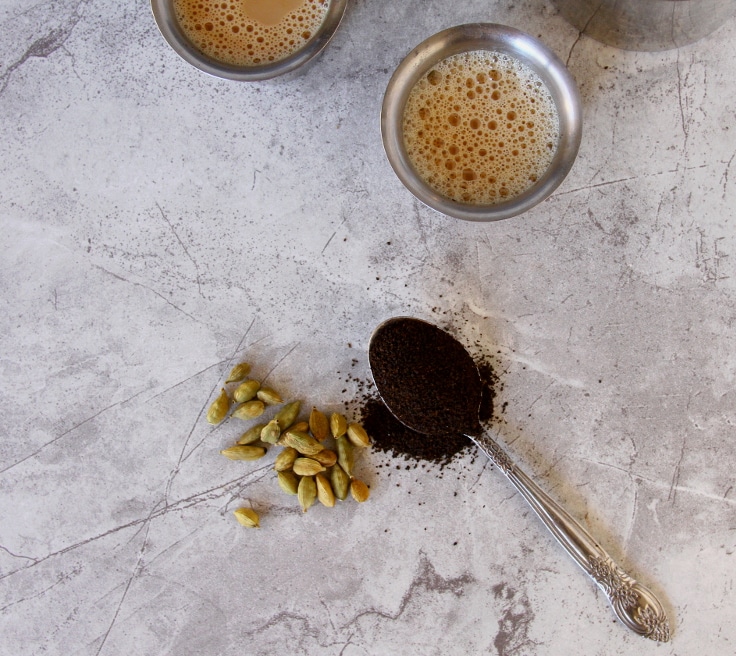
Elaichi Chai (Cardamom Tea)
You Will Need: (Serves 6)
• Milk – 2 cups, full-fat preferred
• Water – 2 cups
• Green cardamom pods – 3, crushed (you can use 1 tsp cardamom powder instead)
• Sugar – 3-4 tsp, heaped
• Black tea dust – 3 tsp
How To:
• Heat milk, water and cardamom in a deep saucepan.
• When you begin to see bubbles at the sides of the pan, add sugar and tea dust. Stir and simmer for a few more minutes.
• Remove from heat when the tea just begins to boil. Strain tea into a clean teapot or another saucepan using a fine-mesh strainer.
• Serve tea piping hot in small cups.
Notes:
• To achieve the froth over the tea, simply pour the tea into the cup from a reasonable height. Attempt this over the sink till you get the hang of it. It’s fun, I promise!
• You can add other Indian spices like a small cinnamon stick, 2-3 cloves, a big piece of ginger and a tiny pinch of crushed black pepper. This masala chai is said to have numerous health benefits as well.
About The Author
Anjana Devasahayam is a mom, foodie, self-taught cook, baker and photography enthusiast. She loves to read, travel and explore different cultures via food, and is addicted to Instagram and coffee. When not running after her five-year old bundle of energy, she shares recipes and stories on her blog, At The Corner Of Happy And Harried. Her little man and her dream of opening our own restaurant/bakery one day. You can also find Anjana on Facebook, Instagram, Twitter and Pinterest.
Jessica Festa
Latest posts by Jessica Festa (see all)
- A Culturally-Immersive Adventure In Mongolia’s Altai Mountains - Jul 8, 2023
- This Recipe Sharing Platform Supports Women In The Culinary Industry (Labneh Recipe Included!) - Nov 5, 2020
- Hiking The Mohare Danda Community Eco-Trek In Nepal - Jun 3, 2020
- 6 Important Questions For Choosing A Responsible Yoga Retreat - May 18, 2020
- How To Create & Grow A Profitable Blogging Business (Ethically) - Jan 18, 2020

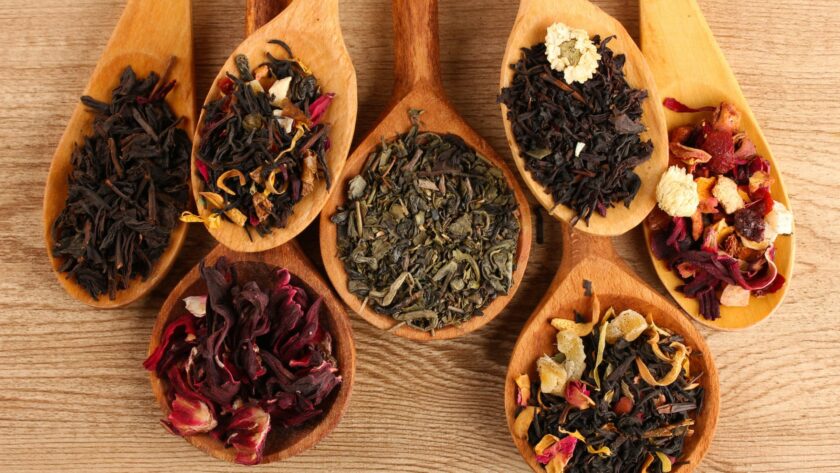
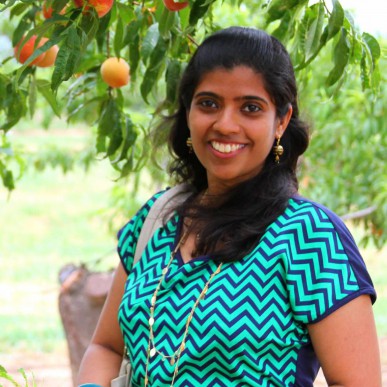
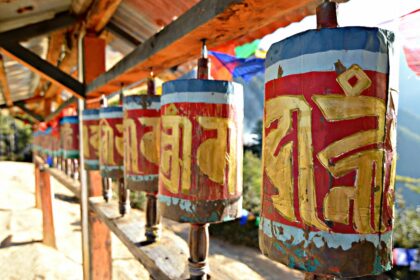



I had so much fun penning my experiences. Thanks for he opportunity, Jessie!
xx,
Anjana.
@Anjana: Thank you for sharing. Your beautiful articles are welcome anytime! 🙂